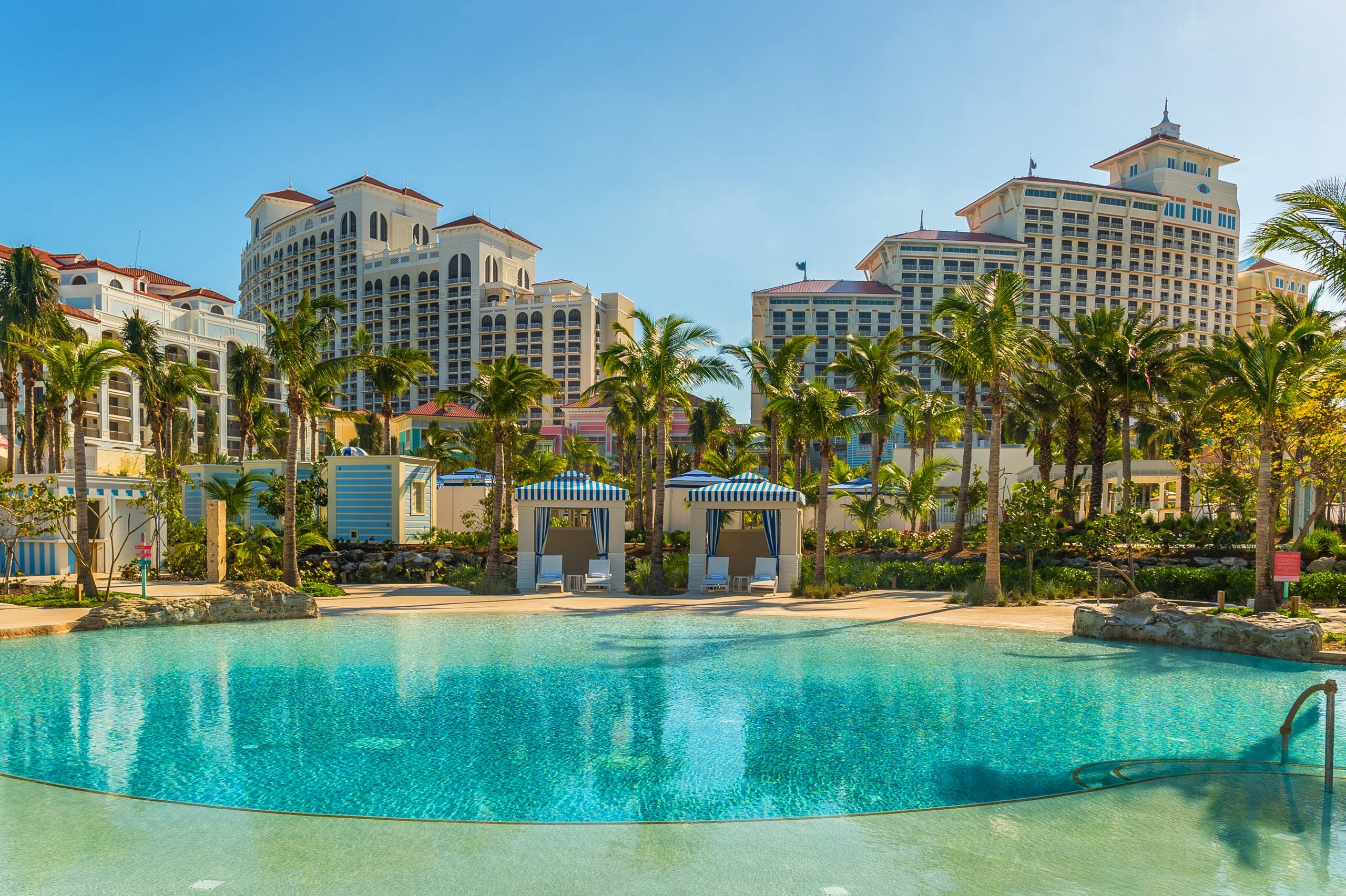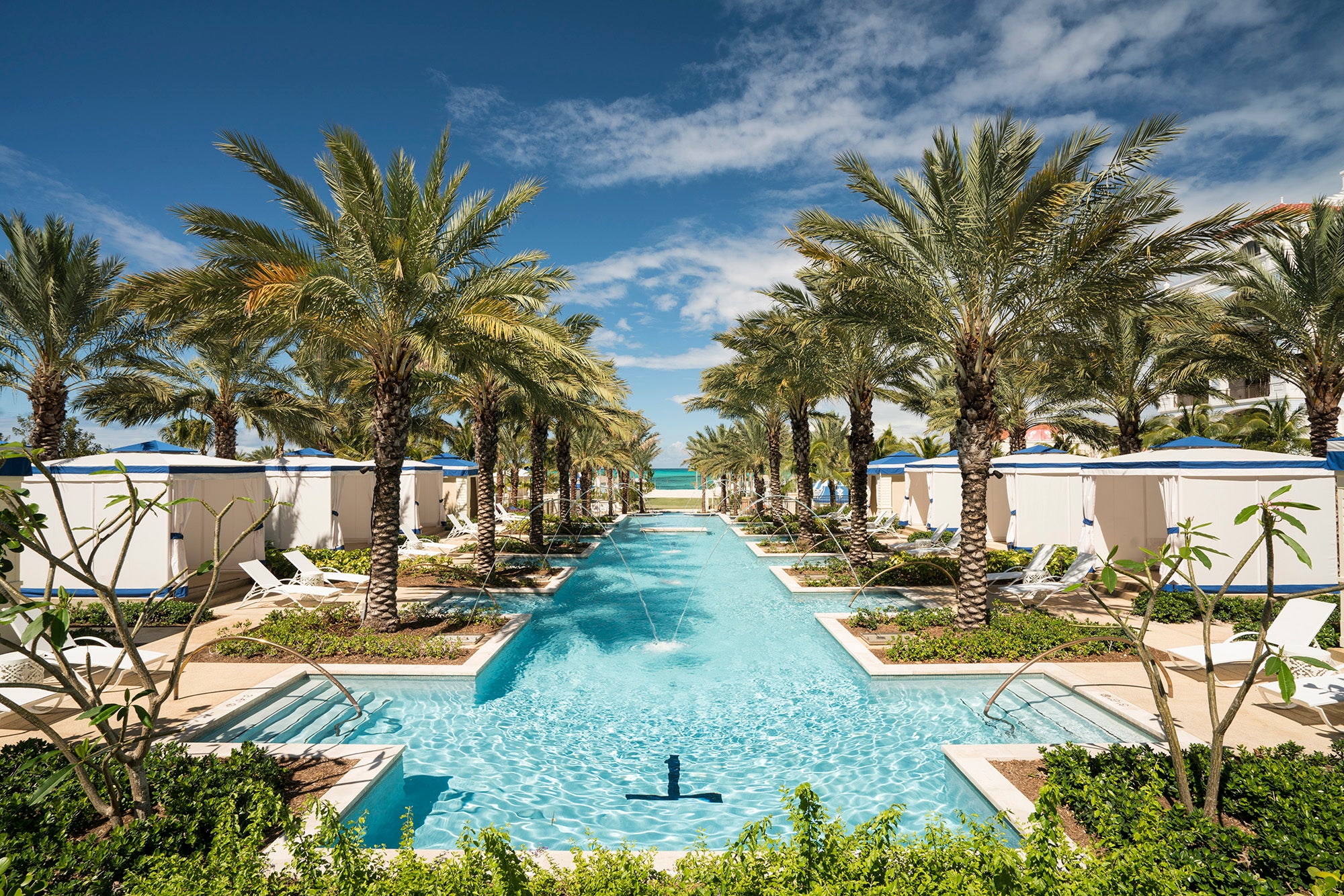
It’s better in the Bahamas — trust us. This Caribbean gem has long been revered as a tourism favorite, but so much has changed over the years it’s definitely time to revisit what makes it special — and it’s not just the picturesque beaches, friendly islanders, and fresh cracked conch.
And the good news? The Bahamas is finally open for inbound travel from U.S. tourists. The bad news: it may not be exactly how you imagine in the midst of COVID-19 travel restrictions. After initially opening its borders to all international commercial travel in July, the Bahamas restricted flights from the United States a few weeks later after seeing a spike in coronavirus cases due to the increased number of tourists. Deciding not to follow suit of many other countries within the Caribbean that were impacted by the tourism decline, the Bahamas instead focused on putting it’s people first, and not dollars.
After a steady decline in cases, the Bahamas decided to try things again by easing into open its borders to travelers from the United States once again in October, requiring negative PCR test results taken within five days prior to arrival and asking visitors to “vacation in place”—or stay on the grounds of their accommodations for the duration of their stay. And vacation in place, I planned to do!
Preparation
Before my trip, there were many things that I needed to plan in order for things to go smoothly: when/where to get my COVID-19 PCR test (which is required no more than five days before your arrival date), submitting my Bahamas Travel Health Visa application, where I planned to visit in the Bahamas, deciding which property had the best sanitation policies, and of course, with limited availability to travel around the island, decide what hotel would have the best amenities, food and friendly staff since I’d mostly be you are confined to the hotel property.
As part of the Travel Health Visa application, travelers must also opt-in for COVID-19 health insurance that will cover the length of their stay. The cost of the insurance is included in the visa application fee, which depends on the length of stay. It costs $40 for visitors staying up to four nights, and $60 for those staying longer than four nights.
Picking a resort
Once all of my paperwork was submitted and approved, it was time to begin planning my trip to Nassau, Bahamas. This one, much different than other recent pandemic travels, because I also had family on the island, so I wanted to make sure I took extra precautions. Which also meant, staying at a property that valued safety and sanitation, so I could self-quarantine before interacting with family.
What better place than the infamous Baha Mar (because if it’s good enough for Drake, it’s good enough for me)? As the leading resort destination in the Bahamas, the resort destination officially reopened its doors on December 17th in a phased reopening by welcoming guests back to the Grand Hyatt Baha Mar at a capacity of 60 percent. The phased reopening will soon see Rosewood Baha Mar open, followed by the SLS Baha Mar.

Sanitation protocols
What made me feel most comfortable here was Baha Mar’s Commitment to Wellbeing, which is an enhanced hygiene and sanitization practice across Baha Mar Resort, Baha Mar Casino and The Performing Arts & Convention Center which exceed recommendations of The Centers for Disease Control (CDC). Face masks are also required of all guests 10 years and above in all public spaces, which made me feel more comfortable than other destinations I’d visited, such as Mexico, where travelers tend to be a bit more free in public.
Prior to the CDC’s announcement requiring all travelers to the U.S. to present a negative PCR test, Baha Mar had already implemented free PCR and Rapid Antigen COVID-19 testing, which put my mind at ease. The tests are administered by Doctor’s Hospital Nassau and once I pulled up to the hotel, it was the first thing they required me to do once I checked in. From there, the check-in process was fairly smooth before they escorted me to my room while I awaited my test results. They make sure not to give you your room key until the results of a negative test come in, which will then allow you to roam free around the property as normal.

Amenities
Most of the restaurants on property have begun to reopen, so we spent our days eating and drinking to our heart’s content at its signature restaurants such as Italian food crafted from fresh at Fi’lia, its contemporary steakhouse, Carne and casually dining at Stix Noodle Bar. Not to mention, we enjoyed the resort’s endless amenities. Home to nine tennis courts, we tried our hand at some tennis lessons, and also enjoyed signature treatments from the resort’s spa and spent endless days enjoying beautiful Cable Beach.
While most of our time was spent on property, we did get an opportunity to sneak off a few times before curfew set at 10PM (though there weren’t many places to visit that were open). We traveled during New Year’s Eve, and the resort also had a fantastic fireworks and light show to celebrate the end of a year that will never be forgotten — which isn’t just limited to the holiday season. All in all, we had no complaints and couldn’t have asked for a better pandemic travel experience than at Baha Mar.
If you do decide to go, remember, everything is based on your own comfort level. And if you still don’t feel comfortable traveling, that’s totally fine too! Save these tips for post-pandemic travel, so you can enjoy Baha Mar to the fullest.
Editor’s note: Due to COVID-19, there are restrictions on international travel, and some areas are still under lockdown. Travel at your own level of comfortability and always follow local health advice. A regularly updated list of available accommodation, sights, and transport can be found on the Visit Bahamas website.